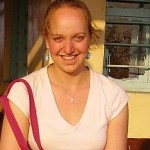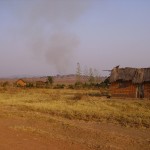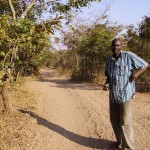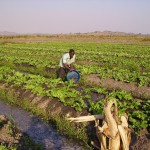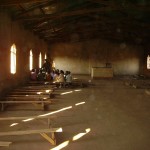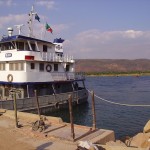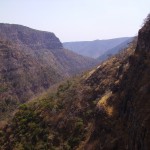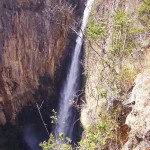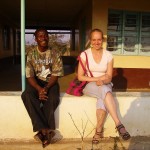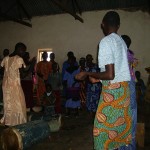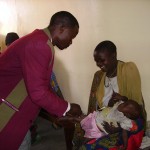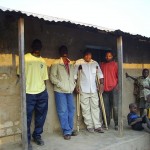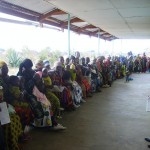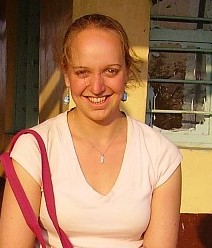 My journey to Kalalasi started while I was a medical student in Cambridge. I wanted to do a medical placement somewhere rural and a bit out of touch with the healthcare system I was used to. The problem was, by definition it was not possible to get in contact with such a place!
My journey to Kalalasi started while I was a medical student in Cambridge. I wanted to do a medical placement somewhere rural and a bit out of touch with the healthcare system I was used to. The problem was, by definition it was not possible to get in contact with such a place!
Eventually and fortunately, I came across information about SUDA and Mbeka helped me arrange to travel to Kalalasi and work in the health centre there.
I landed in Dar Es Salam and after a 2 day bus ride was met by Mr Chambi, the district planning officer in Sumbawanga. Sumbawanga is the capital of the Rukwa region of Tanzania and it was here that I got my first introduction to the Tanzanian healthcare system and how the healthcare centre in Kalalasi fitted into that system.
People living in Kalalasi who became unwell would normally first consult the local health centre. Unusually compared to health centres in surrounding villages, the health centre in Kalalasi is staffed with a doctor as well as a nurse. If the patient’s condition could not be managed at the health centre they would be referred to the larger health centre in Matai (a 1-2 hour cycle from Kalalasi) or the regional hospital in Sumbawanga. By the time patients are unwell enough to need to go to Matai or Sumbawanga, however, they are often too unwell to make the journey. Many people also opt to consult local or traditional healers alongside this system. In the hospital in Sumbawanga I was made aware of the healthcare burdens from diseases such as malaria and HIV and the limited resources available for treatment in this region of Tanzania.
In Kalalasi, a village of about 2300 people, I stayed with the village chairman, Mr Chole, and his family. Kalalasi health centre had one doctor and two nurses, although not all the staff were there throughout my visit.
One of my first activities was to assist in weighing all the children as part of routine health checks. This sort of measure is important in identifying health problems early but was made more challenging by difficulties in documentation. In Tanzania each individual is responsible for their own medical records and for most this takes the form of a jotter which they take to the doctor or hospital. The problem is many people do not have a jotter and those that do may use the same jotter for all family members making it difficult to establish someone’s past medical history or in this case to identify if a child’s weight was increasing appropriately.
In addition we vaccinated many of the children against diphtheria, tetanus, polio and TB both from the village and surrounding villages. As Kalalasi had no electricity vaccines could not be stored. It was necessary for them to be delivered in a cool box from Matai and for all the vaccinations to be given in one day.
The health centre is also important in offering routine health checks to pregnant women. Maternal mortality is still a significant cause of death in Tanzania and noticing any complications in pregnancy early could help improve this by allowing women to travel while they are well enough to a larger health centre or hospital for treatment. In addition vitamins were prescribed to pregnant women who attended the health centre.
The conditions seen in consultations in the health centre were naturally linked to wider aspects of daily life and public health. Drinking water for the village was collected from a small stream at one edge of the village and most people drank this water without boiling it. We suspected that a large number of cases of illness and gastroenteritis seen in the clinic were linked to this. The health centre was involved in encouraging people to boil water but this is difficult because of lack of firewood and the inconvenience, particularly for those working on their farms during the day. One of the projects, in addition to the health centre, that SUDA is involved in is planting of trees. In the long term this may help alleviate the difficulties with a lack of firewood and shield the village and crops from the winds. For now, the trees can only just be made out from the surrounding landscape!
I also saw many cases of suspected malaria while in the village. I learnt that the word for fever is synonymous with the word for malaria in Swahili and perhaps this is an indication of how common the disease is. The health centre was able to prescribe quinine tablets and injections for those with malaria. It also has a room with 2 beds to enable intravenous treatment to be given for more unwell patients and to provide an area for pregnant women to give birth. It was not possible to perform a diagnostic test to confirm if a patient did have malaria, however and this meant that treatment had to be given empirically. As in the UK, many people visiting the health centre expected to be given antibiotics even when there was no evidence of a bacterial infection. The widespread use of drugs combined with the limited number of antibiotics is likely to contribute to drug resistance in the area.
In conclusion, my visit to Kalalasi made me aware of many of the ongoing challenges of providing healthcare in this environment. As a small charity SUDA and the health centre are well placed to help identify health problems early and offer medical treatment to those who might otherwise be unable to access it. During my stay in the village I was told that the people of Kalalasi were proud of their health centre and the health centre was known in the surrounding villages I visited. At a personal level, I am really grateful for the warm welcome I received and the chance to visit the health centre. One of the women with whom I became friends taught me how to say “I miss Kalalasi” in Swahili, and, leaving the village on my last day, I did.
